When it comes to determining whether you are nearsighted or farsighted, it can be a bit confusing. These terms are often mentioned when discussing the need for corrective glasses, but understanding the difference is key to finding the right solution for your vision needs. So, how do you know if you are nearsighted or farsighted? Let’s delve into the details.
The Basics: Nearsightedness and Farsightedness
Nearsightedness, also known as myopia, is a condition where your vision is clear up close but becomes blurry in the distance. On the other hand, farsightedness, or hyperopia, leads to clear vision at a distance but difficulty focusing on objects that are up close. Both nearsightedness and farsightedness stem from issues with how light is focused by the eye.
Determining Nearsightedness
To determine if you are nearsighted, you can consider your vision at close range. If you are nearsighted, you will generally have a clear range of vision when looking at objects up close. You might be able to read books or work on your computer without much difficulty. However, when it comes to seeing objects in the distance, they appear blurry. This is why individuals with myopia often need to wear glasses to correct their vision for distance viewing.
Assessing Farsightedness
In contrast, farsighted individuals will struggle with both near and distant vision. When you are farsighted, your ability to see things clearly diminishes with proximity. This means that objects up close may appear blurry, requiring you to strain your eyes to focus on them. Similarly, distance vision may also be problematic for farsighted individuals. It’s not uncommon for significantly farsighted individuals to require glasses for both near and distance vision.
Seeking Professional Evaluation
While the above guidelines can help you get an initial idea of whether you are nearsighted or farsighted, it’s essential to consult with an eye care professional for a comprehensive evaluation. They will conduct a thorough eye examination, which may include visual acuity tests, refraction exams, and assessments of your eye health. Their expertise will ensure an accurate diagnosis and help determine the best course of action for your specific needs.
Corrective Options
If you are determined to be nearsighted, the primary correction option is glasses or contact lenses that help you see distant objects clearly. These corrective lenses compensate for the eye’s elongated shape, which causes light to focus in front of the retina. On the other hand, farsighted individuals may require glasses or contacts for both near and far distances to address the difficulty in focusing on objects up close.
Regular Eye Exams
Whether you are nearsighted or farsighted, regular eye exams are crucial for ongoing vision care. Your eye care professional will monitor any changes in your vision and recommend adjustments to your prescription as necessary. Routine eye exams also provide an opportunity to detect and address any other underlying eye conditions.
If you have questions about your eyes or whether you are nearsighted or farsighted, your eye doctor can help answer these questions!
Our eye doctors at EyeDocs Family Eye Care in Brookville, OH excel in the prescription of glasses, contact lenses and the diagnosis of a variety of eye diseases. Call our optometrists at 937-770-1265 or schedule an eye exam appointment online if you would like to learn more about nearsightedness and farsightedness. Our eye doctors, Dr. Kyle Maxam and Dr. Cara Wampler, provide the highest quality optometry services and eye exams in Brookville, Ohio.


0 Comments